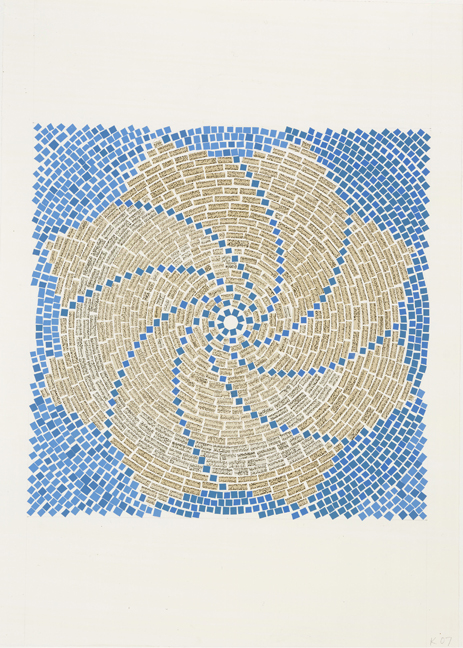« News World
Y. Z. Kami: Endless Prayers

Y. Z. Kami. Endless Prayers V, 2007. Mixed media on paper. 45 1/2" x 33". © Rob McKeever. Collection of Susan and John Hess, New York
November 21st, 2008 - February 11th, 2009
Parasol unit foundation for contemporary art will present the first UK solo exhibition of paintings, collages and photographs by the Persian born artist Y.Z. Kami. Endless Prayers will present a diverse group of works, created over a period of ten years, and shown for the first time in this country.
The most striking works in Endless Prayers are Kami’s large, frontal portraits of ordinary people, each of whom entirely fills their canvas, often measuring three metres by two metres. Despite their imposing size and intense presence these portraits are neither flattering nor psychological; rather, they objectively depict the subjects as they are, absorbed in their own world. This characteristic together with their fresco-like quality, executed using a special painting technique, endows the figures with a certain lack of materiality resembling that of Faiyum portraits which were painted to accompany Egyptian mummies in their graves. In some of the paintings the eyes of the subjects are closed, but in others they are open and they gaze either inwardly or at a fixed point in the distance. No eye contact can be established by the viewer and each painted figure seems to carry their own distinct history within them.
The same frontal perspective and detachment is prevalent in Kami’s monumental photographs of Islamic sites and architecture. For Kami, architecture, like human beings, speaks of its own history and at times he combines architecture with portraits of people to create some poignant works, such as Dry Land, 1994-2004.
The exhibition will also feature Kami’s collages, entitled Endless Prayers. These works are made by gluing countless minute brick-shaped cut-outs from poetry books on to the canvas in circular arrangements or according to some Islamic architectural detailing of domes. The spiralling patterns are inspired by the whirling motions in the rituals of dervishes found in the Mawlavi order of Sufism, who profess that the act of spinning undoes the ego, cleanses them of the self and finds the sole unity of God. Sufism was founded by the fourteenth century Persian poet Rumi, whose poetry has played an important role in Kami’s life since he began studying it as a young man. The work entitled Konya, 2007, was made in homage to the poet and bears the name of the town where Rumi was born.
Y.Z. Kami was born in 1956 in Teheran, Iran, and now lives and works in New York. He has had many solo exhibitions in America, for example Barbara Toll Fine Arts, New York, 1992 and 1993; Holly Salomon Gallery, New York, 1996; Deitch Projects, New York, 1998 and 2001; Herbert F. Johnson Museum of Art, Cornell University, Ithaca, New York, 2003; John Berggruen Gallery, San Francisco, 2007 and Gagosian Gallery, Los Angeles, 2007. Kami’s work is in the collection of several major museums in the United States, such as the Metropolitan Museum of Art, the Museum of Modern Art and the Whitney Museum of American Art, all in New York.
To accompany the exhibition of Kami’s works, Parasol unit will present gallery talks, film screenings and poetry readings each Thursday at 7 p.m. These events form part of ‘Thursdays at Parasol’, a rolling events and education programme.
More information can be found at www.parasol-unit.org
Filed Under: News World


































